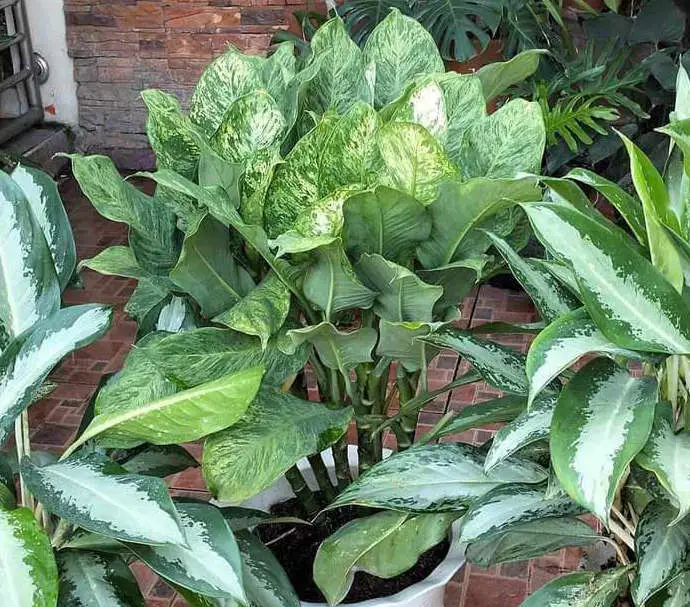Calibrachoa is a beautiful, colorful flower that can add to the beauty of your garden. It’s also an incredibly resilient plant. So why do some calibrachoas die?
There are many reasons for this happening, but one of the most common causes is over-watering. If you find yourself in this situation, don’t worry! We’re here to help with five tips on how to fix it and keep your plant going strong all summer long!
Why Is My Calibrachoa Dying?
Your calibrachoa is likely dying because it has root rot, which has been caused by receiving too much water. With so much water at the base of the pot, the plant can’t receive the nutrients and oxygen it needs to survive.
However, that is just one of the most common reasons. I will now go into a few more possible reasons for your calibrachoa to be dying…
1. Not enough fertilizer
Don’t forget to fertilize as well! If your soil is lacking in nutrients, the plant may be dying because it can’t get what it needs. Yellowing leaves are a big clue that this is the cause.
I use Miracle Grow on all of my houseplants. This fertilizer provides every nutrient that the plant needs while simultaneously not giving too much nitrogen, which would scorch its leaves.
2. Pests
A bug infestation may be destroying your plants. If you notice any bugs buzzing around the leaves or devouring the roots, make sure to remove them with neem oil (amazon link) as soon as possible!
Mites, thrips, and aphids are the ones to look out for. Make sure you wash the plant thoroughly first to remove any bugs that may be on it, and then generously apply neem oil afterward for maximum effect.
3. Cold weather
The cold weather may be killing your plants, especially as the calibrachoa is loves being kept in warm conditions. If you live in an area that experiences cold winters, it’s important to make sure the plant is protected from any frost or freezing temperatures.
Unfortunately, you can’t make your plant a hot chocolate. But, you can move your plant into a warmer spot. If it’s too cold outside, bring the pot inside where there is plenty of natural light and warmth so that it can recover from being too cold.
4. Too much water
As we discussed earlier in this post, too much water can be the cause of many problems for all plants.
Root rot is when the roots of a plant become too wet and start to decompose. The most common cause for this problem is over-watering, but there are other causes as well.
When a plant’s roots are rotting, it can be hard to figure out what the problem is. The first step in reviving your sickly plants starts with cutting off all of their brown stems and then removing any other dead leaves that you come across. However, if you see blackened or sludgy roots on your plants, they may not be salvageable.
To avoid this from happening again, make sure that you are watering only when necessary so as not to overwater it again. You can check if the plant needs water by probing the soil with your finger. If it’s moist, then don’t water it for a few days.
5. Not enough sunlight
Your calibrachoa needs at least six hours of sun exposure per day. You may wish to place this pot on an east-facing windowsill or purchase grow lights for indoor plants. These will help give your plant just what they need when there isn’t enough natural light outside, like during the winter months here in the UK. Well, like every month here in the UK…
6. Disease
If you’re still struggling, it may be a disease. There are many types of plant diseases that can affect your calibrachoa and make them wilt away in a matter of days.
Some common examples are verticillium wilt, fusarium root rot, fungal leaf spot, and sooty mold. If this is the case for your plant, I recommend contacting an expert to figure out what type of fungus or bacteria has infected your plants before taking any corrective action.
7. Poor drainage
The drainage may be the problem. If your plant is sitting in a pot with too much soil, water will pool at the bottom and make it difficult to breathe.
You’ll want to add a drainage layer at the bottom of your pot so that excess moisture can leave more easily and avoid root rot from taking over. You can use rocks or gravel to help with this process!
8. Sunburn
The calibrachoa may be sunburning. If you notice any brown spots on the leaves, this is likely due to too much exposure to sunlight and not enough water intake.
This means that your plant needs more shade than it’s getting so far outside of the summer months in areas with lots of sunshine. The best way to do this would be by moving it across the room from a sunny window or adding some shading around its pot when outdoors. You could also use fabric like cheesecloth if you don’t want anything permanent.
Conclusion
In conclusion, there are many reasons why your calibrachoa may be dying. The most common reason is overwatering, but sometimes it can also be cold weather or pests that cause the problem. Make sure you’re watering when necessary and keeping an eye out for any signs of bugs!
Tim is an avid gardener from the UK. He was the founder of PlantCarer.com from 2021 to Sep 2023. He sold PlantCarer.com to Aaron. He has since started his own business called Seed To Supper, which provides new gardeners all the materials you need in a box (pots, seeds, compost and instructions) to grow your own delicious and nutritious vegetables and herbs from start to finish – no garden required.






0 Comments